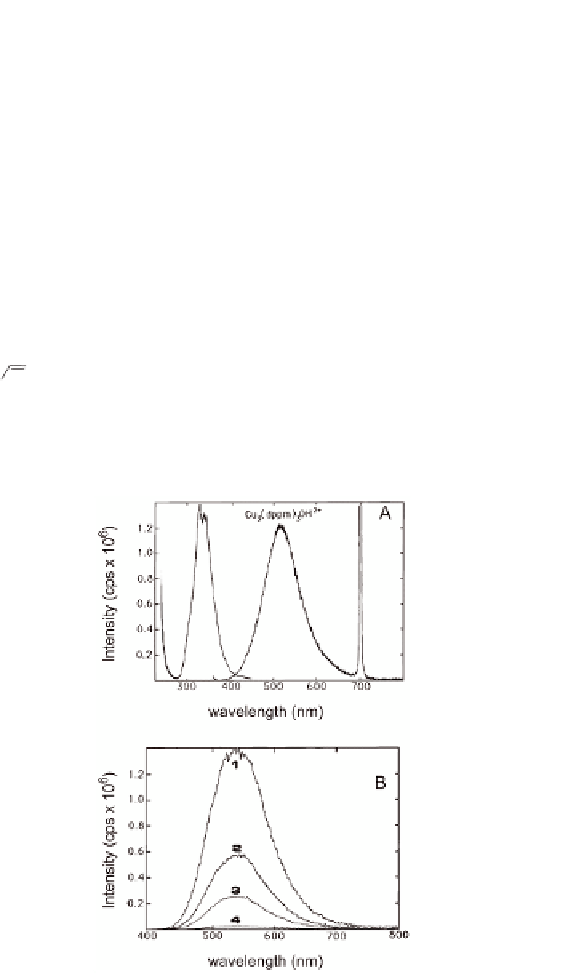Biology Reference
In-Depth Information
510 nm at 77 K) is located between the emissions found for the
solutions at 298 K (
l
= 540 nm;
t
= 89
±
9
µ
s;
F
= 0.14
±
0.01)
max
e
l
t
in degassed ethanol solution and at 77 K (
= 480 nm;
= 170
max
e
±
0.07) also in ethanol, which are described to be
phosphorescence from an excited state delocalized throughout the
tricopper frame. Interaction of
40
µ
s;
F
= 0.73
±
2
with carboxylates (either acetate
or
4-aminobenzoate)
quenches
the
luminescence,
apparently
because of the formation of a host
guest exciplex (see Fig. 10.3). The
quenching constants were found to be 1.65
−
−
×
8
×
8
1
10
and 5.10
10
M
−
1
s
for acetate and benzoate, respectively.
O
O
Guests
Cu
2+
N
N
O
O
P
P
N
O
Cu
P
Cu
P
N
N
N
O
O
Cu
P
Cu
P
N
N
O
O
17
16
Figure 10.3
(A) Solid-state emission (right) and excitation spectra (left)
of
at 77 K. The peak at 700 nm is an instrumental artefact
(first harmonic of
17
l
excitation at 350 nm); (B) emission
intensity quenching on addition of 4-aminobenzoate to an
Ar(g)-degassed ethanolic solution of
17
at 298 K: (1) no
−
5
−
5
quencher, (2) 1.07
×
10
M, (3) 3.15
×
10
M, and (4) 4.15
×
−
5
10
M. Reproduced with permission from Ref. [70].

























































































































































Search WWH ::

Custom Search